My friends and family were in a Facebook thread about the next underrated vegetable that needs to be on menus everywhere. Remember when kale was a star? Kale salad, kale soup, sauteed kale, kale chips. We tossed around suggestions for the next lowly vegetable. A few people mentioned “parsnips”.
Wouldn’t you know it—the next day King Arthur Flour’s email had a link to a recipe for Maple Parsnip Scones. It’s from Tandem Coffee and Bakery in Portland, Maine.
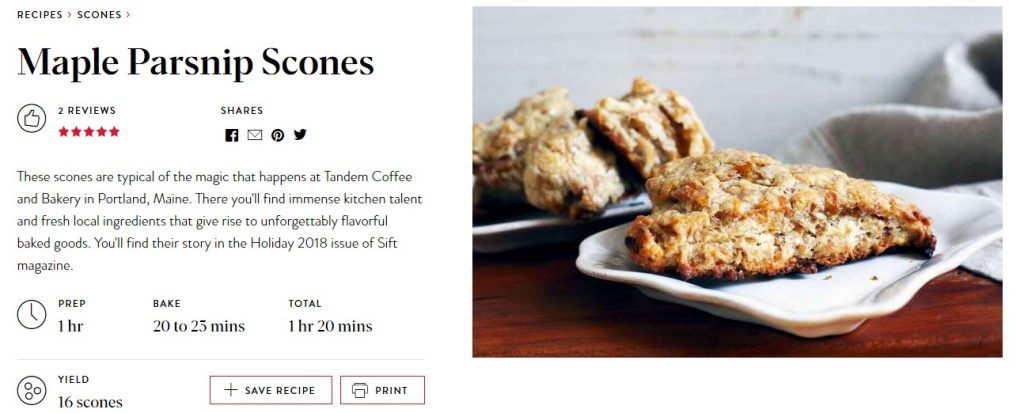
As with any recipe that’s designed for high volume — like for a bakery — there is always the chance of a conversion mistake, not to mention typos, when it’s scaled down for the home kitchen.
Like the time I tried to make the Espresso Barley Biscotti recipe from a bakery school. It called for 3 cups (750 mL) of flour and ¾ cups (185 mL) of baking powder!
It’s not just conversion errors that can affect a baking recipe. The smaller the measuring cup or spoon, the more of the ingredient will be lost, i.e., not make it into the bowl. So these bakery recipes almost always need to be tested and tweaked.
In making these scones, I made just one adjustment — I thought the recipe called for way too much flour. Instead of 3 ¾ cups of flour, I used 3 ¼ cups, or a half cup less.
Making these scones takes more effort than regular scones because you have to grate the parsnips (2 large parsnips is plenty for 2 cups). Parsnips aren’t as easy as carrots to grate—they shred weird and pieces fly everywhere. If you have a machine to do this, that would be GRATE (haha).
Here are the grated parsnips ready for roasting. Maple syrup has been drizzled over top, along with the salt.
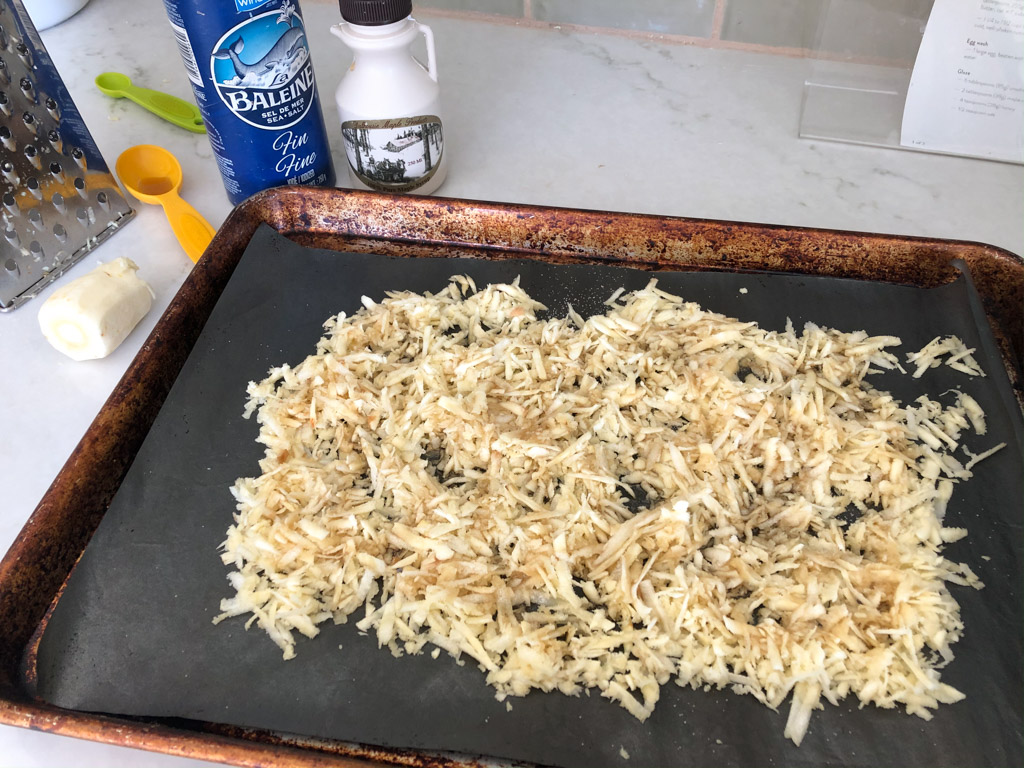
As soon the pan came out of the oven, about 15 minutes later, the cinnamon/allspice/pepper mixture was sprinkled over top. Parsnips oxidize (turn brown) quite quickly and the cinnamon masks it well. The roasting did not caramelize the parsnips. I think it just “cooked” them so that they wouldn’t be so chewy in the finished scone. (Please don’t judge my roasting pan.)
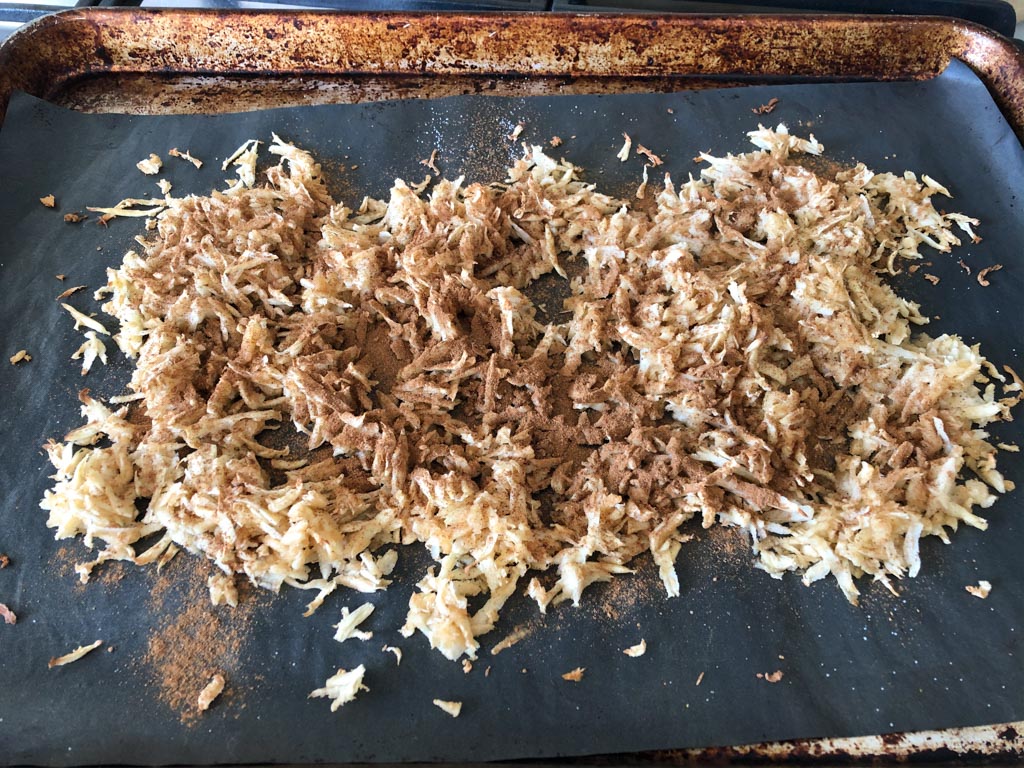
There was one other change I made, out of necessity. I was short on buttermilk by half a cup so I mixed in natural yogurt.
Prior to baking, I put the scones into the freezer for 20 minutes, just like the recipe said.
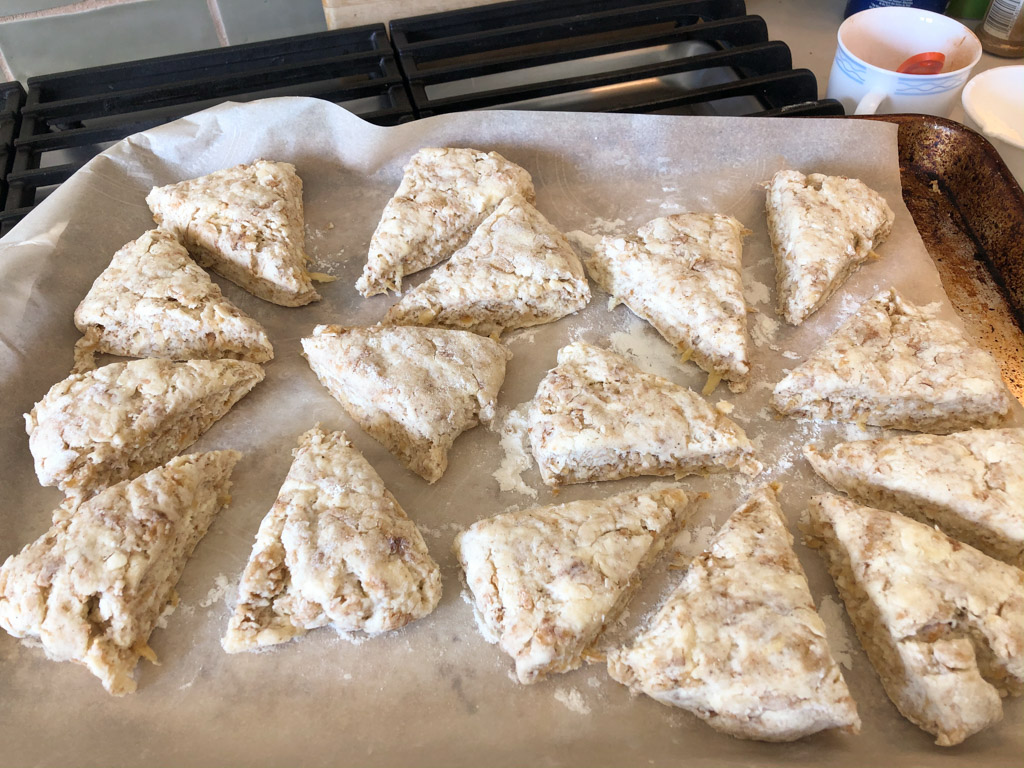
The result was 16 tender, richly moist, buttery scones.
Eating just one or two of these scones is quite filling. I believe this recipe could go a long way to satisfying a large group. The recipe would probably work just as well with less butter, say, two tablespoons less.
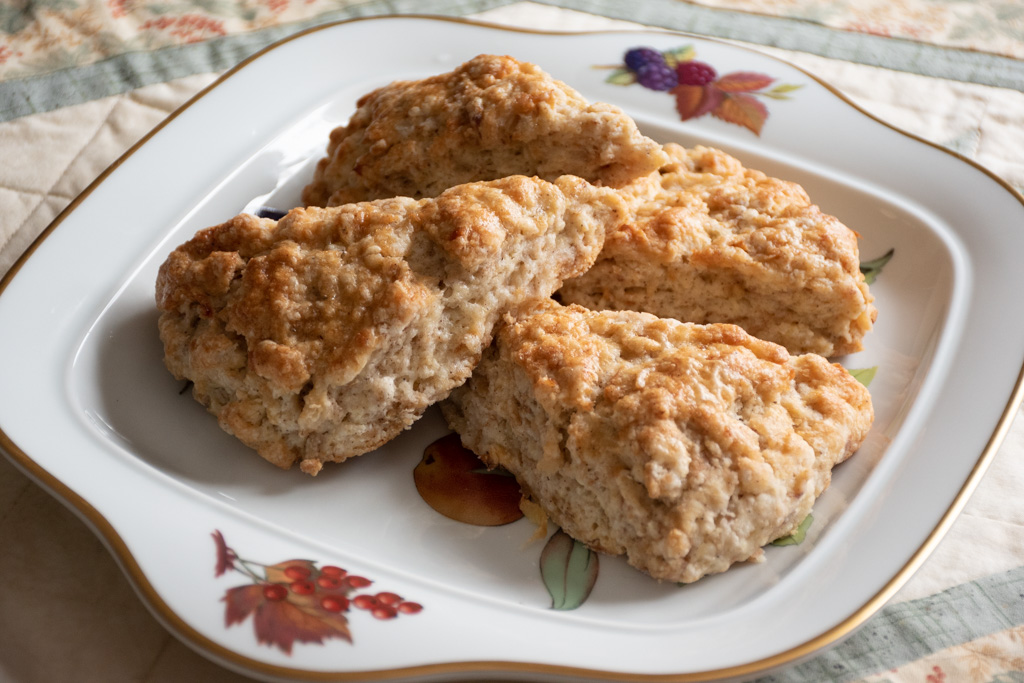
I don’t think the parsnips delivered any distinctive flavour, at least not to my tastebuds, but they did contribute A LOT to the texture. Not to mention nutrition!
I’m sure the roasting of the parsnips is essential. The next time I bake with grated apple, I’m may roast it first and see how that works out.
What I learned from this adventure is that putting grated parsnip into your baking makes it both remarkable and mysterious. If you make these, no one will be able to guess what you did to make it so tender and rich.